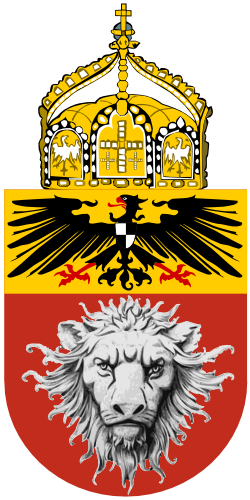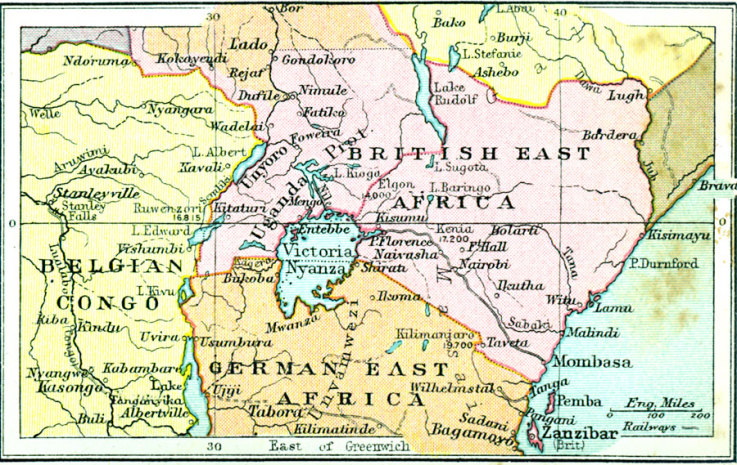The African campaign
The British West Indies Regiment and West India Regiment supported the campaigns against Germany’s Colonies during the First World War. The West India Regiment was deployed on guard duties and as labour battalions in this theatre when the war began, supporting the earliest campaigns in Germany’s West African colonies. As that campaign continued into 1916, after which point British West Indies Regiment servicemen joined the mission, fighting raged in East Africa.
The British West Indies Regiment had a notable presence in East Africa. A draft of five hundred men was sent to the region, comprised of two officers and three hundred Other Ranks from the 1st Battalion, three Officers and a hundred Other Ranks from both the 2nd and 3rd battalions. In East Africa, Caribbean servicemen were present in the campaign to eliminate the threat from Germany’s East African colony, Tanganyika, today Tanzania. There they joined the fierce campaign led by General Jan Smuts and chased the elusive German General Paul von Lettow-Vorbeck deep into the African jungle. Guerrilla fighting across East Africa created an intense and harsh environment where many died of disease. The detachment arrived from Egypt in August 1916 at Kilikandi in order to aid the British force that was being outmanoeuvred by the Askaris under German command. Their role mainly consisted of guard duties, although this did play a part in the strategy for the overall capture of Dar-Es-Salaam. Owing to the small size of the detachment, the difficulty of receiving reinforcements, and the reduction of effective strength by the harsh climate, it was not included in a division established to advance against the German forces.
In 1917, however, part of the detachment of the draft was sent to capture an enemy supply base at Maduba, a successful operation that resulted in Captain Cressell, the detachment commander, receiving the Military Cross. Later that year, a small party of six men, led by Corporal Tomlinson, found an enemy ammunition dump located south of the Rufugi River and then make a march of over 300 miles to re-join the main body of the draft. For this feat they were mentioned in dispatches. In June 1918, the detachment was inspected by Lieutenant General Van Derventer, Commander-in-Chief of the Allied forces in East Africa, who commented that the men had done all that was asked of them and that they had coped well with the difficult environmental conditions.
Two West Indian Servicemen were recognised during the African campaigns: Captain Cressell BWIR won a Military Medal and Corporal Tomlinson BWIR was Mentioned in Despatches.

The Germans in Africa
The German strategy in Africa was to maintain control of valuable territory, whilst also providing a large enough threat to Allied interests on the continent to divert their forces away from the Western Front. West Indian servicemen were present during this dramatic and unexpected campaign.
Guerrilla fighting that began early in the war in German East Africa spread quickly throughout the region into Mozambique, British East Africa, Rhodesia, Uganda, and the Belgian Congo. Allied operations in East Africa were directed by South Africa’s General Smuts, who commanded his own force of 13,000 South Africans and Rhodesians, as well as 7,000 colonial troops from other parts of Africa and India. This force invaded German territory from the north, while Belgian troops advanced from the other direction, sailing across Lake Victoria from the Congo.
The German commander in East Africa, Lettow-Vorbeck, evaded the initial assault, and British numbers were soon heavily depleted by disease. By September 1916, however, the German railways were under British control and the German forces had been penned into the south of the colony. Whilst encamped in this region, and while holding off German counter-offensives, Smuts replaced his South African, Rhodesian, and Indian troops with soldiers from the King’s African Rifles, amassing a total of 35,000 men by November 1918.
In October 1917 Lettow-Vorbeck’s army won a resounding victory against the British colonial force, suffering only a sixth of the casualties they inflicted. When news of this battle reached Germany, Vorbeck was immediately promoted to Major General. His army was continually forced south by British attacks, and eventually crossed into Portuguese Mozambique to plunder for supplies. The Germans divided their numbers into three groups, one of which was to surrender within weeks due to food and water shortage. The remaining two crossed into northern Rhodesia in August 1918, and took the city of Kasama unopposed on the 13th November, two days after the Armistice was signed and the conflict officially ended. Soon after Lettow-Vorbeck received a telegram detailing the Armistice in Europe, he ordered a ceasefire and then formally surrendered within the week. With Germany’s defeat, her colonies in Africa were divided between Britain and France.

